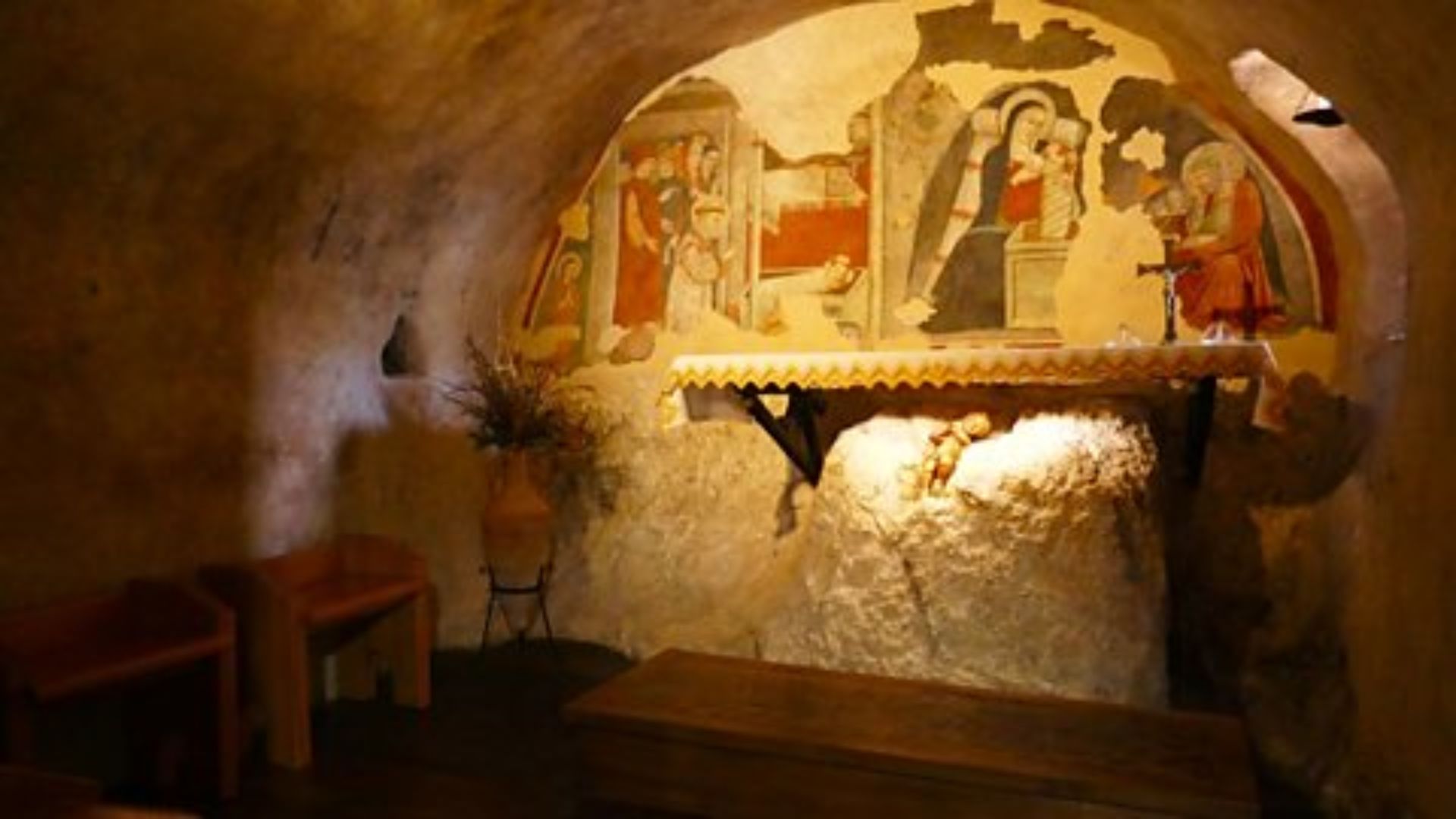The story of the birth of the first Nativity scene in the picturesque town of Greccio in 1223 reveals the journey of a humble friar but also the genesis of a cherished Christmas tradition.
It was the year 1221, and the humble friar, St Francis of Assisi, inspired by a pilgrimage to the Holy Land, carried within him a desire to redefine the celebration of the birth of Jesus.
As the sun dipped below the horizon, casting hues of amber and lavender across the Italian landscape, St. Francis gathered with a trusted friend in the quaint town of Greccio. The air crackled with anticipation as Francis spoke with a passion that mirrored the flame of the solitary candle illuminating the room.
"[...] I would make memorial of that Child who was born in Bethlehem," Francis expressed, his eyes reflecting the distant lands he had traversed, "and in some sort behold with bodily eyes His infant hardships; how He lay in a manger on the hay, with the ox and the ass standing by."
It was a novel idea—celebrating Christmas not within the solemn halls of a church adorned with statues but amidst the rustling leaves of a humble hilltop grove, surrounded by the simple creatures of the earth. The vision sought to echo the very essence of the first Christmas, embracing the raw beauty and profound poverty of that sacred night.
In the heart of Greccio, simplicity was not merely a virtue; it became a revered guest, poverty an exalted companion, and humility, the honored host. Francis' vision transformed the landscape into a new Bethlehem—a place where the night sparkled as the day and joy permeated the very air, reaching both man and beast alike.
As the eve of the Nativity drew near, the chosen hilltop grove buzzed with a quiet excitement. Fires were lit, casting a warm glow that painted the scene with flickering shadows. The air was filled with the scent of hay and the soft rustling of leaves, setting the stage for a night unlike any other.
With a heart full of tenderness and eyes sparkling with wondrous joy, Francis stood before the manger. The solemnities of Mass unfolded over the humble cradle of hay, and the attending priest found a new consolation in the simplicity that surrounded him.
Yet, the night held more than the eye could behold. According to St. Bonaventure, a valiant soldier, a witness to this sacred scene, attested to a miraculous occurrence. An Infant, marvelously beautiful, slept in the manger, cradled in the arms of the blessed Father Francis—a moment that transcended the bounds of the earthly and touched the divine.
The tale of that transformative night echoed through the hills, spreading like wildfire. In 1291, the echoes reached the ears of the first Franciscan pope, Nicholas IV. Recognizing the profound significance of the living Nativity, he commissioned statues to create the first permanent Nativity scene in the Roman Basilica of St. Mary Major—a testament to the enduring legacy of Francis' vision.

From that humble hilltop grove in Greccio, the story of the Nativity scene unfolded across the centuries. It reached every corner of the world, capturing the imaginations and hearts of believers.
Today, Nativity scenes in all shapes and sizes stand as a testament to the enduring magic found in the humble manger of Bethlehem—a magic that St. Francis, in his simplicity and humility, unveiled for the world to cherish.
In commemorating that sacred night, believers are invited to partake in a timeless journey, embracing the virtues of simplicity, poverty, and humility with each passing Christmas.